SHANIDAR Z
What did Neanderthals
do with their dead?
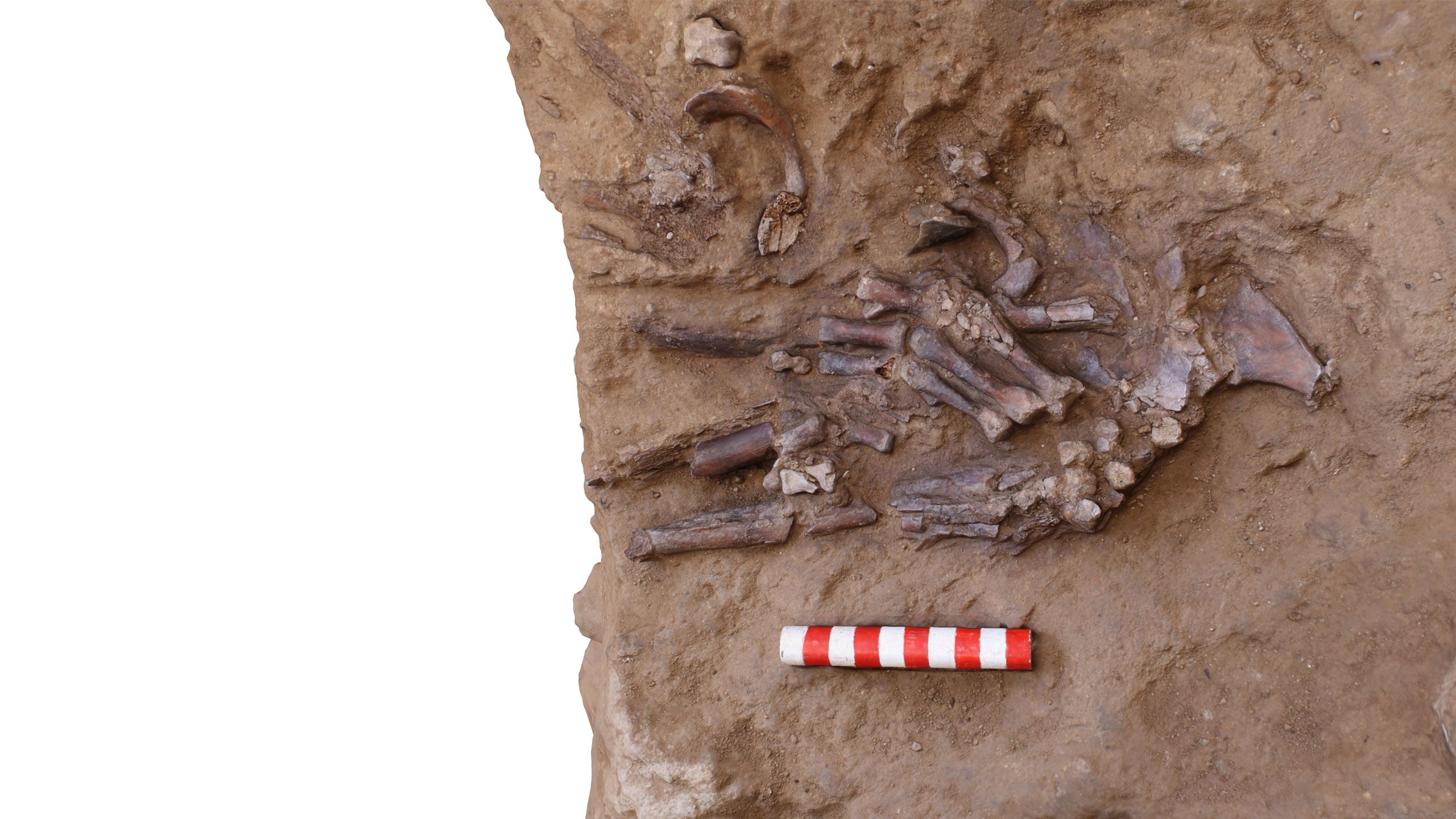
Traces of pollen among a cache of Neanderthal skeletons discovered in the mid-20th century led to contentious claims of a ‘flower burial’ and human-like death rituals.
Now, the legendary site has been re-excavated, revealing a further body...
In the foothills of northern Iraq is a cave that has sheltered shepherds from winter winds for generations.
It concealed Kurdish families during the reign of Saddam Hussein.
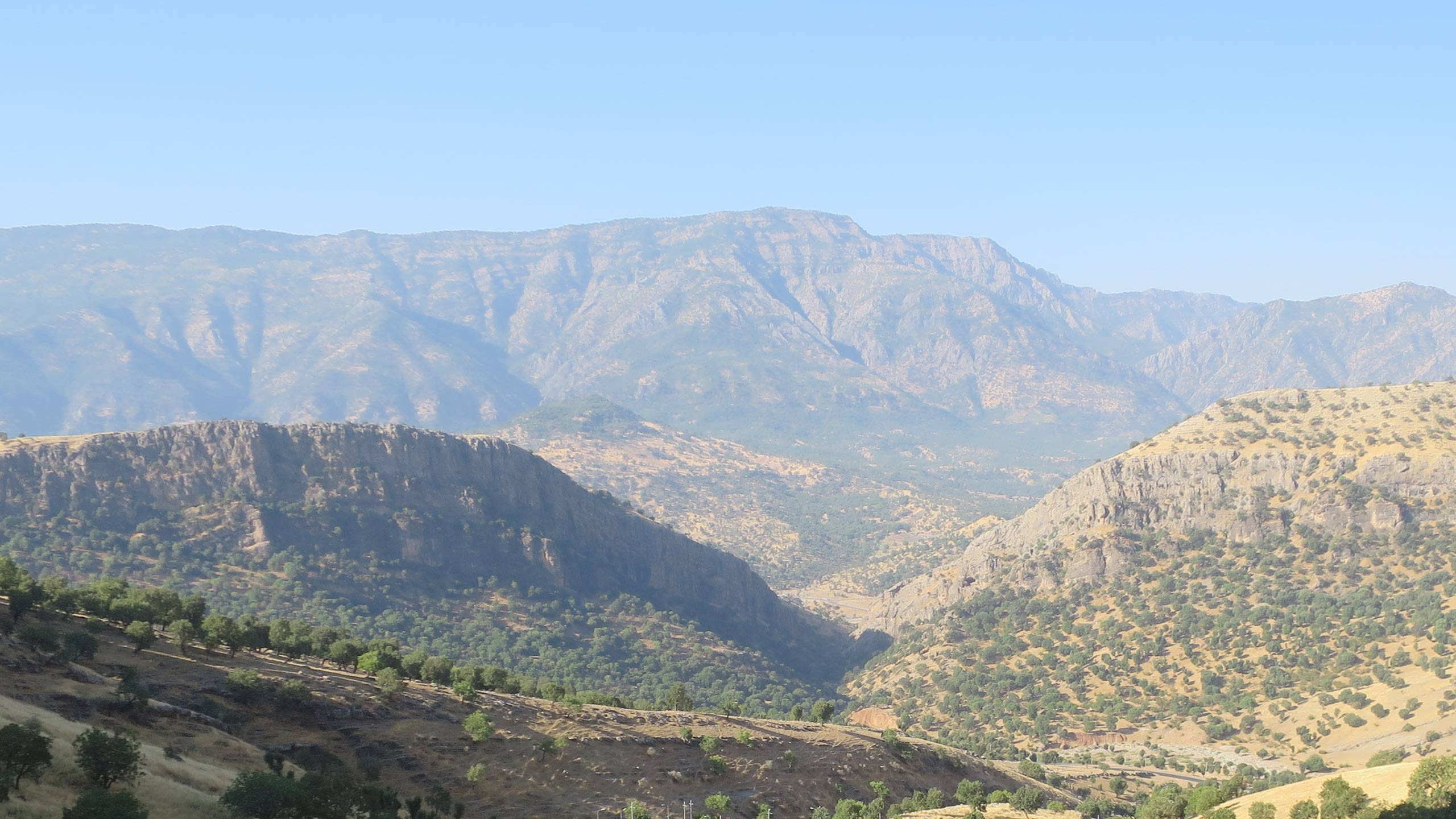
As well as aiding the living, Shanidar Cave harbours the dead.
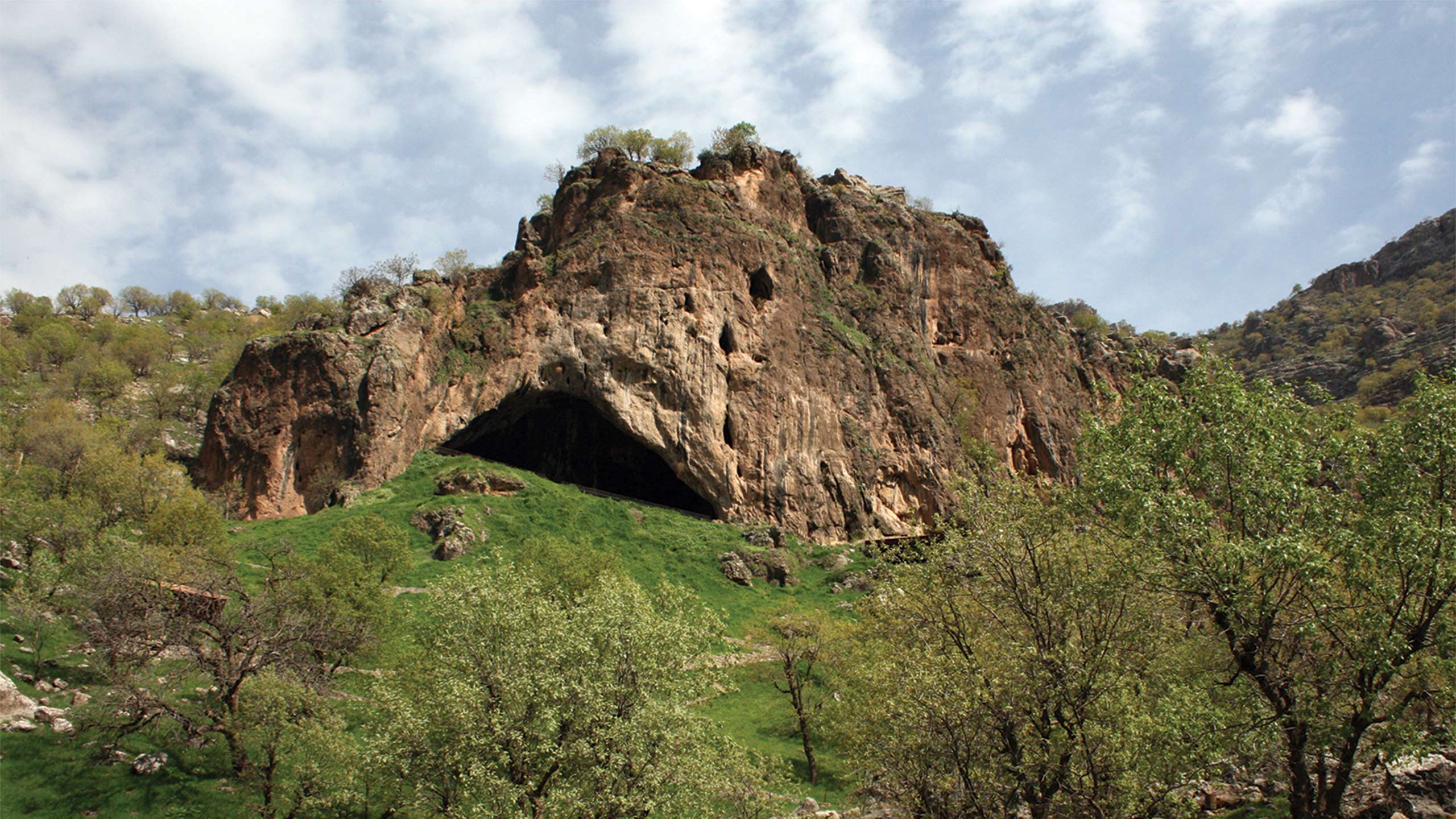
A graveyard of 35 people laid to rest over 10,000 years ago was uncovered in Shanidar Cave by archaeologist Ralph Solecki in 1960.
This cemetery was found at the end of four seasons of excavation, during which time Solecki discovered something more extraordinary: the partial remains of ten Neanderthal men, women and children. Mid-20th century techniques could only date them to over 45,000 years ago.
Stockier than us, with heavy brows and sloping foreheads, it had long been assumed that Neanderthals were primitive and animalistic: subhuman. Evolutionary losers ultimately rendered extinct by their own deficiencies.

Illustrated reconstruction of a Neanderthal man. Hermann Schaaffhausen, 1888.
Illustrated reconstruction of a Neanderthal man. Hermann Schaaffhausen, 1888.
However, Shanidar Cave suggested a far more sophisticated creature. One male had a disabled arm, deafness and head trauma that likely rendered him partially blind. Yet he had lived a long time, so must have been cared for. Signs of compassion.
Four individuals were found clustered together in a “unique assemblage”, with ancient pollen clumped in the sediment around one of the bodies. Solecki claimed this as evidence of Neanderthal burial rites: repeated interments; the laying of flowers on the deceased. Human-like ritual behaviour.
Controversy ensued, and still lingers. Does Shanidar Cave show that Neanderthals mourned for and buried their dead? Were they far closer to us in thought and action? What does this mean for the evolution of our lineage?
“Undergraduates across the world studying pre-history get asked a version of: Neanderthals were nasty, brutish and short – discuss. The Shanidar flower burial always comes up,” says Prof Graeme Barker, Fellow of St John’s College and former Director of the McDonald Institute for Archaeological Research.
“Shanidar Cave is iconic in 20th century archaeology”
One such student essayist at Cambridge would eventually be among the first archaeologists allowed back into Shanidar Cave for more than fifty years. “I stood at the bottom of the hill leading up to the cave and thought: how am I getting to do this?” says Dr Emma Pomeroy, now a lecturer at the University and Fellow of Newnham College.
She first heard about the cave while studying at St. John’s College. “It was mind-blowing. School hadn’t taught us about human evolution, and I was fascinated by what Neanderthal behaviour might tell us about our own species.”
Ralph Solecki didn’t finish excavating at Shanidar. He tried to re-excavate several times – reaching the foot of the hill in 1978 – but was stymied by political unrest, and his neglected trenches filled with rubble. Solecki died in March last year aged 101.
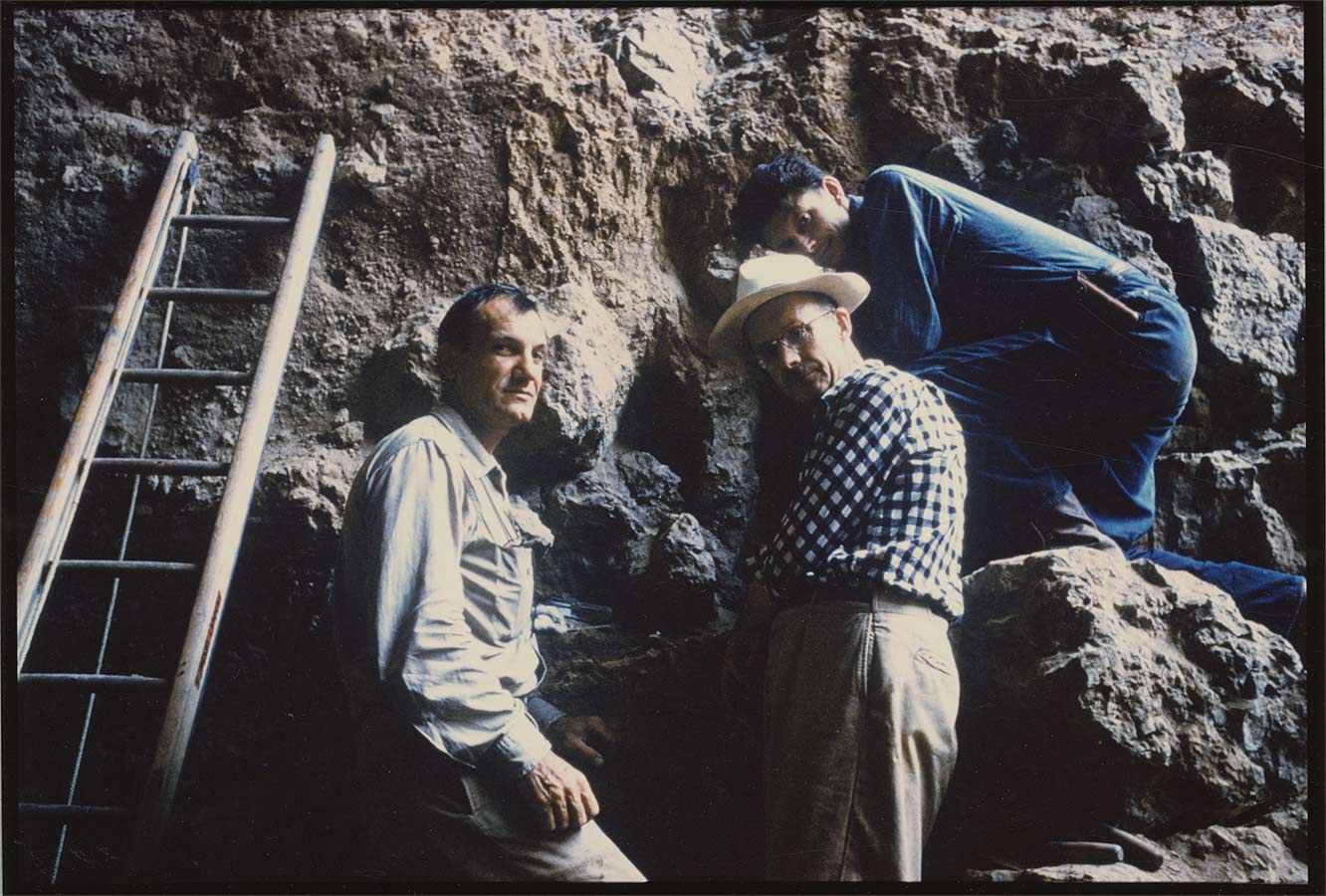
Shanidar 4 (the 'flower burial') in situ in 1960, with Ralph Solecki on the left. Credit: Ralph S. and Rose L. Solecki papers, National Anthropological Archives, Smithsonian Institution.
Shanidar 4 (the 'flower burial') in situ in 1960, with Ralph Solecki on the left. Credit: Ralph S. and Rose L. Solecki papers, National Anthropological Archives, Smithsonian Institution.
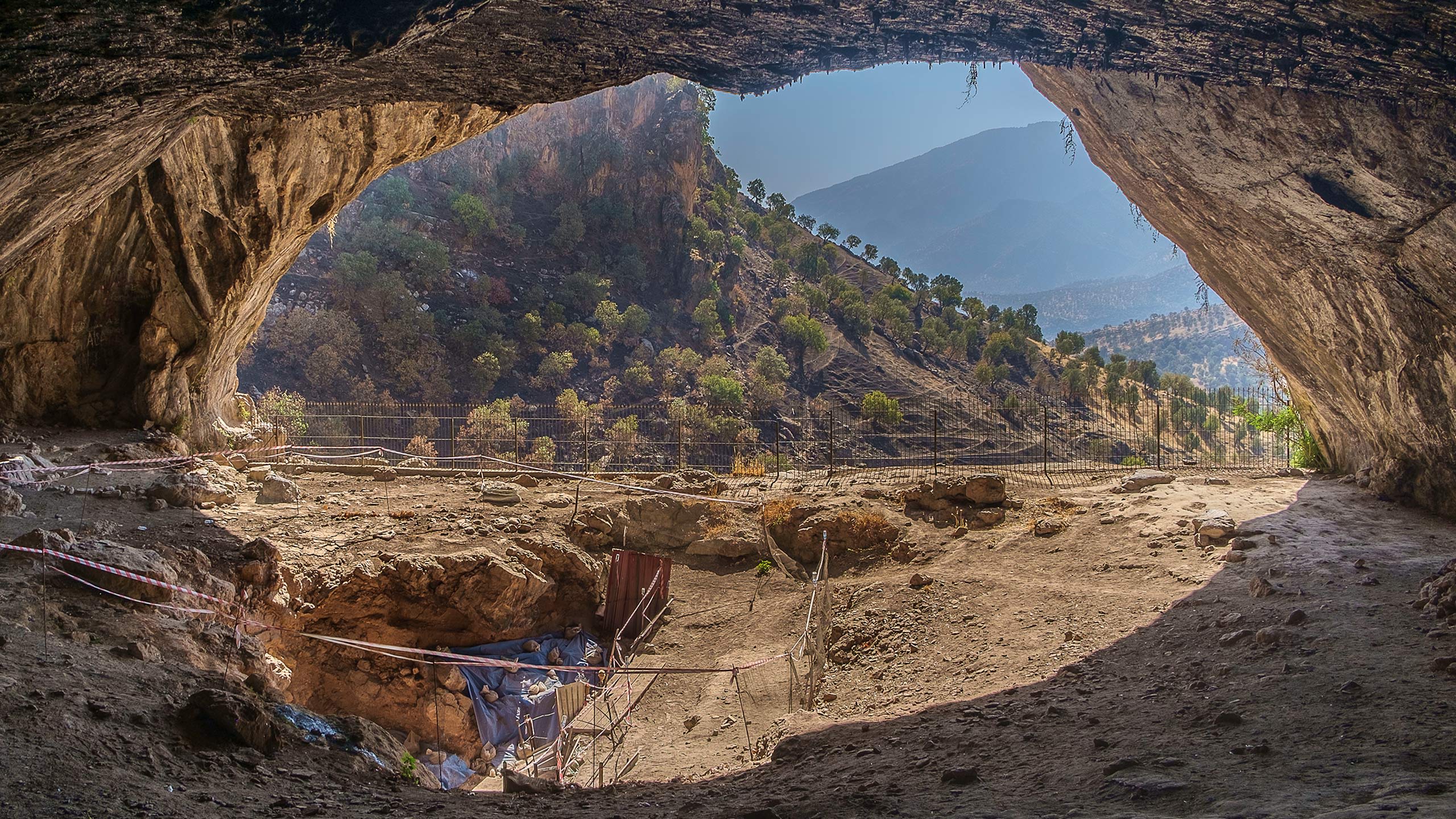
In 2011, Barker was invited by the Kurdistan Regional Government to re-excavate Shanidar. “Most archaeologists would jump at the chance,” he says. “The fact that Solecki was enthusiastic was a clincher.” Initial digging in 2014 stopped after two days when ISIS got too close, but resumed in earnest the following year. Pomeroy joined the team in 2016 as the project’s palaeoanthropologist.
The Neanderthals had been found by Solecki between three and seven metres down, and the idea was to reopen the trenches to get samples of soil, in the hope of pulling new evidence for age or climate from microscopic mineral and animal fragments.
“We thought with luck we’d be able to find the locations where Solecki had discovered the Neanderthals, and see if we could date sediments with techniques they didn’t have back in the fifties,” says Barker. “We didn’t think we’d be lucky enough to find more Neanderthal bones.”
In 2016, down in the “Deep Sounding” of the Solecki trench, while working on the eastern face, a rib emerged from the wall, followed by the arch of a lumbar vertebra, then the bones of a clenched right hand. Archaeologists would have to wait until the following year to begin excavating the delicate remains from beneath metres of rock and soil.
During 2018 and 2019, the team uncovered a seemingly complete skull, flattened by thousands of years of sediment, and upper body bones almost to the waist – with the left hand curled under the head like a small cushion.
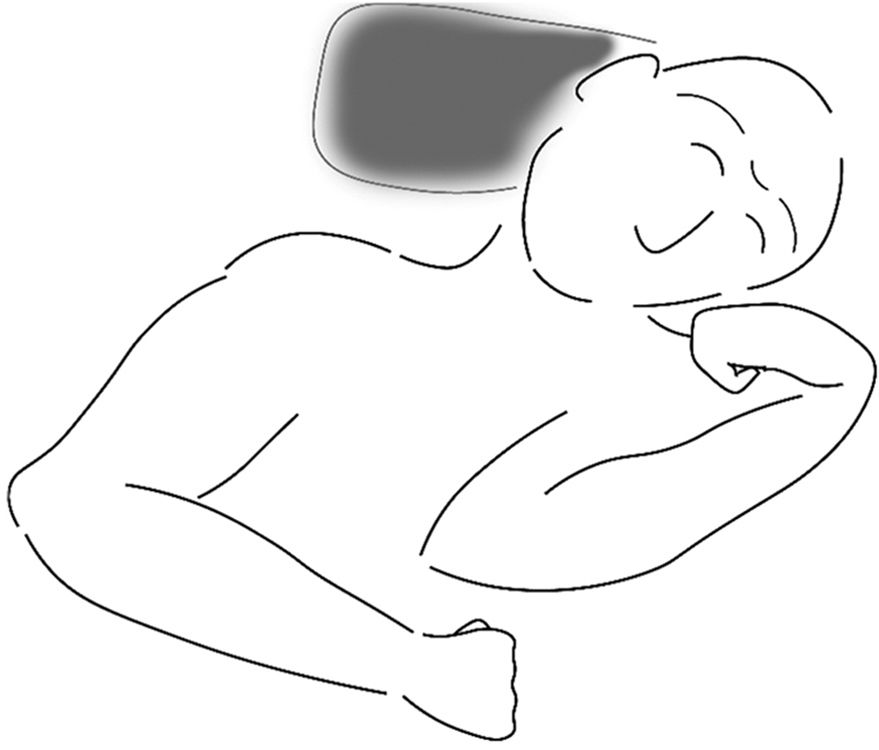
Quick sketch of the Neanderthal body position by Dr Emma Pomeroy.
Quick sketch of the Neanderthal body position by Dr Emma Pomeroy.
The first articulated Neanderthal skeleton to be found in this part of the world for a quarter of a century is over 70,000 years old. Sex is yet to be determined, but it has the teeth of a “middle- to older-aged adult”.
The find is described in a new paper published in the journal Antiquity.
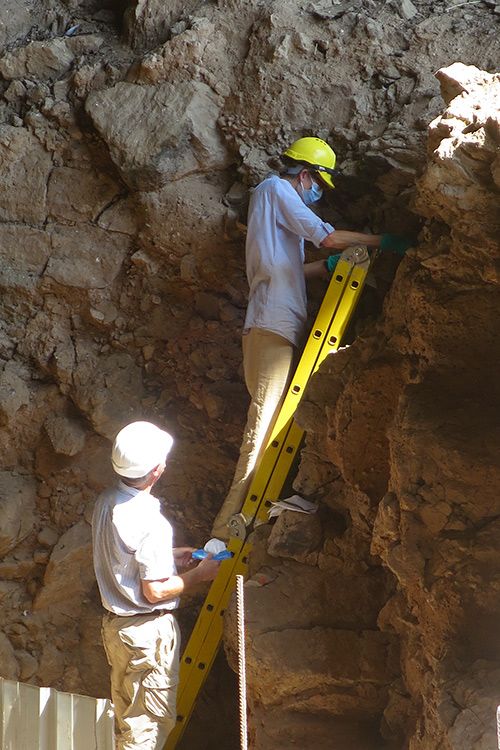
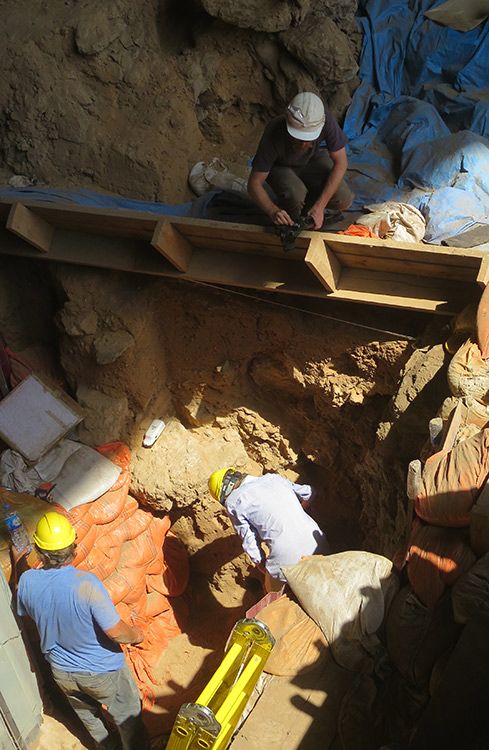
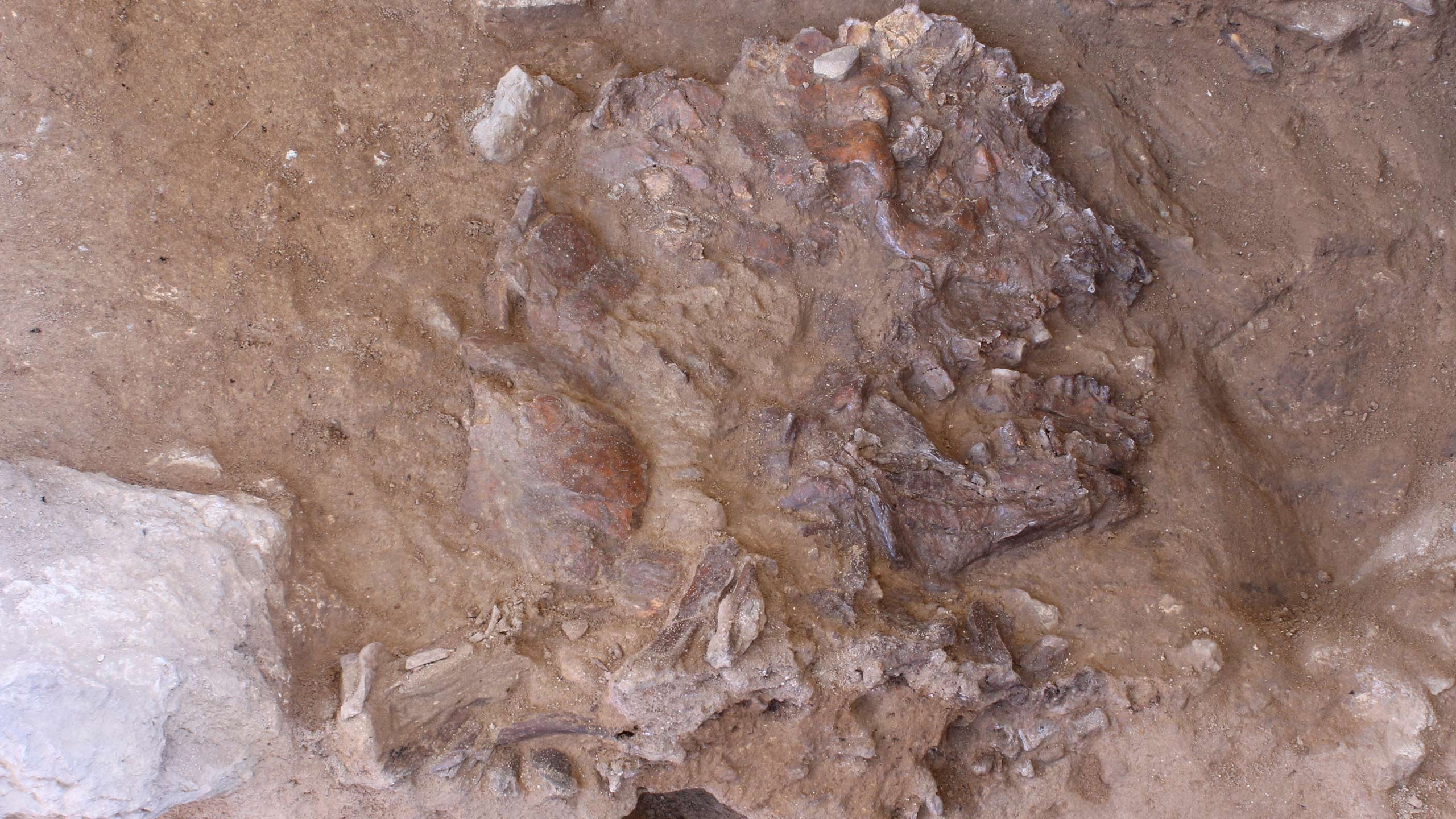
The Neanderthal skull, flattened by thousands of years of sediment and rock fall, in situ in Shanidar Cave, Iraqi Kurdistan.
The Neanderthal skull, flattened by thousands of years of sediment and rock fall, in situ in Shanidar Cave, Iraqi Kurdistan.
The bones are “heartbreakingly soft” says Pomeroy. Barker describes the consistency as akin to wet biscuit, and soil had to be slowly and meticulously scraped away, sometimes using bamboo kebab sticks. “Emma’s got an eye for where the various protuberances of bone are likely to be,” says Barker. “It took her weeks of intense concentration working in what is pretty much a sauna in terms of heat and humidity.”
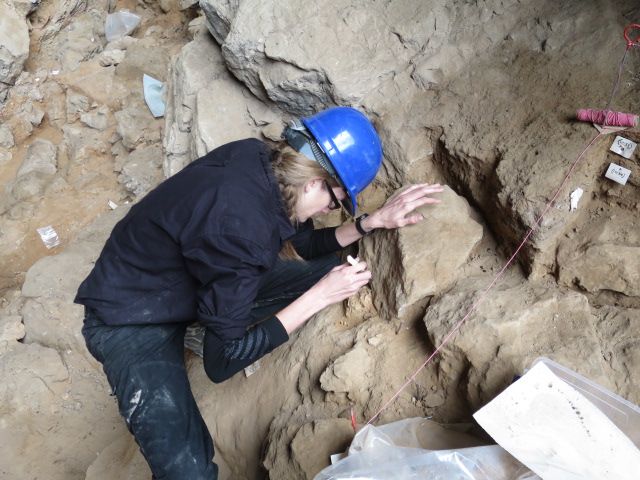
Dr Emma Pomeroy at work in Shanidar Cave.
Dr Emma Pomeroy at work in Shanidar Cave.
A glue-like consolidant is then brushed on, soaking in to bolster the bone, before sections are lifted out and wrapped in foil. But the bones are just the headline act. Scoops of surrounding soil are also ferried to camp where they are washed and picked through. Barker says they collect everything larger than two millimetres.
The painstaking work of excavating in situ is risky as the bone is so fragile. An alternative is “en bloc”: to coat the area in plaster and extract it wholesale, then excavate fully in the lab.
“We considered en bloc, but it can be quite brutal,” says Pomeroy. “Crucially, it risks destroying precious evidence that may determine whether the Neanderthals were buried in a purpose-dug pit – a grave – or not.”
In the 1950s, Solecki opted for the en bloc excavation of the ‘flower burial’. Pomeroy thinks it was this extraction that left the latest Neanderthal find chopped at the waist. “In their notes they describe bones trickling out of the block. Solecki numbered the individuals; we think we have the top half of Shanidar 6, but until we can confirm this we call ours Shanidar Z.”
What thrills both archaeologists is the wealth of evidence to be gleaned from Shanidar Z using technologies unavailable to Solecki. “In the Neanderthal burial debate, archaeologists are always going back to the reports of finds from sixty or a hundred years ago, but that only gets you so far,” says Pomeroy. “Now we have primary evidence.”
She is currently CT-scanning each segment of Shanidar Z in the lab at the Cambridge Biotomography Centre, and will rescan them once the layers of silt – the “matrix” – are removed. Ultimately a digital reconstruction will emerge.
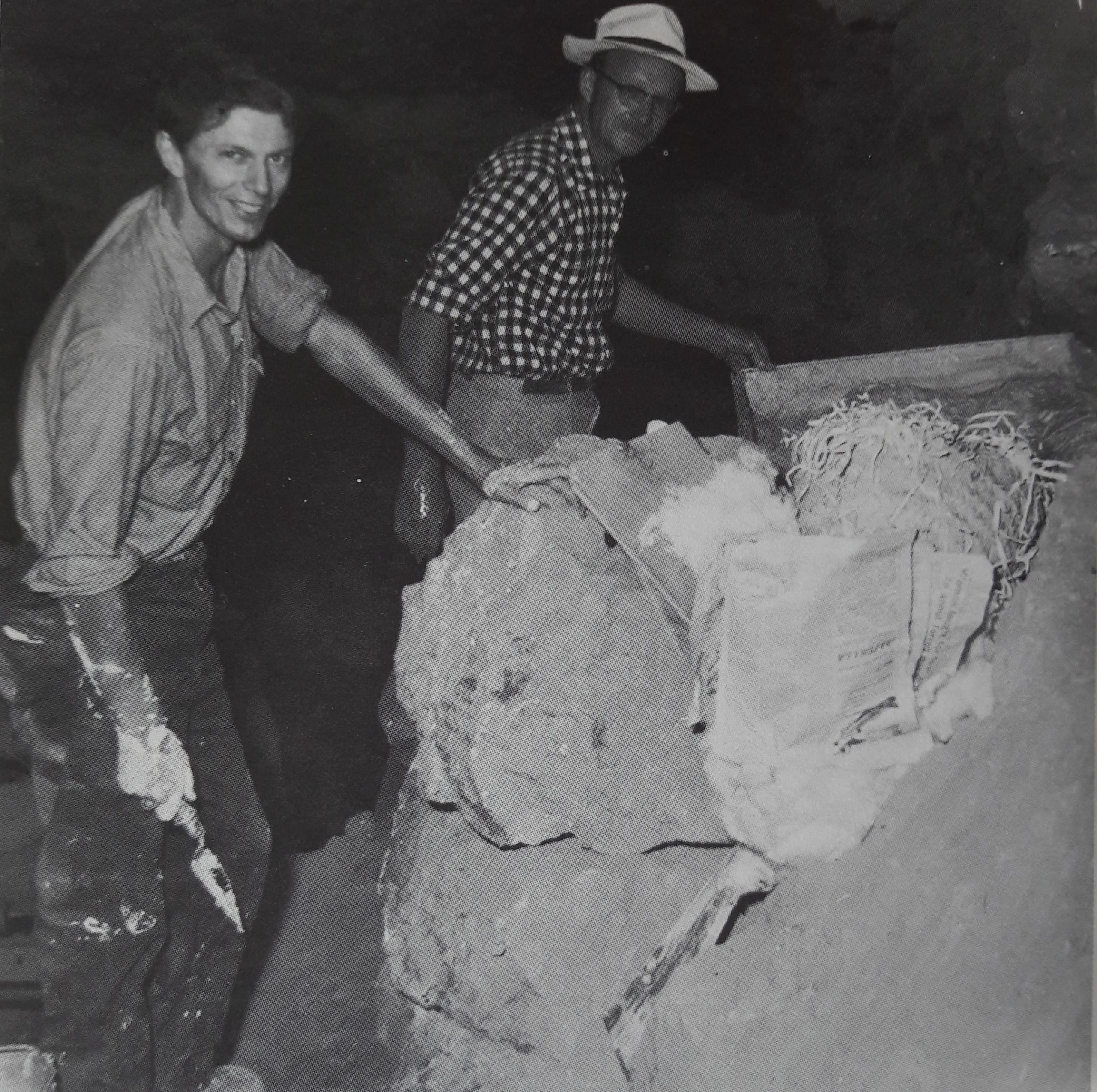
Members of Ralph Solecki’s team, Dr T. Dale Stewart (right) and Jacques Bordaz (left) at Shanidar Cave in 1960, working on removing the remains of Shanidar 4 (the ‘flower burial’) en bloc. This block of sediment was later found to also contain the partial remains of 3 more individuals.
Members of Ralph Solecki’s team, Dr T. Dale Stewart (right) and Jacques Bordaz (left) at Shanidar Cave in 1960, working on removing the remains of Shanidar 4 (the ‘flower burial’) en bloc. This block of sediment was later found to also contain the partial remains of 3 more individuals.
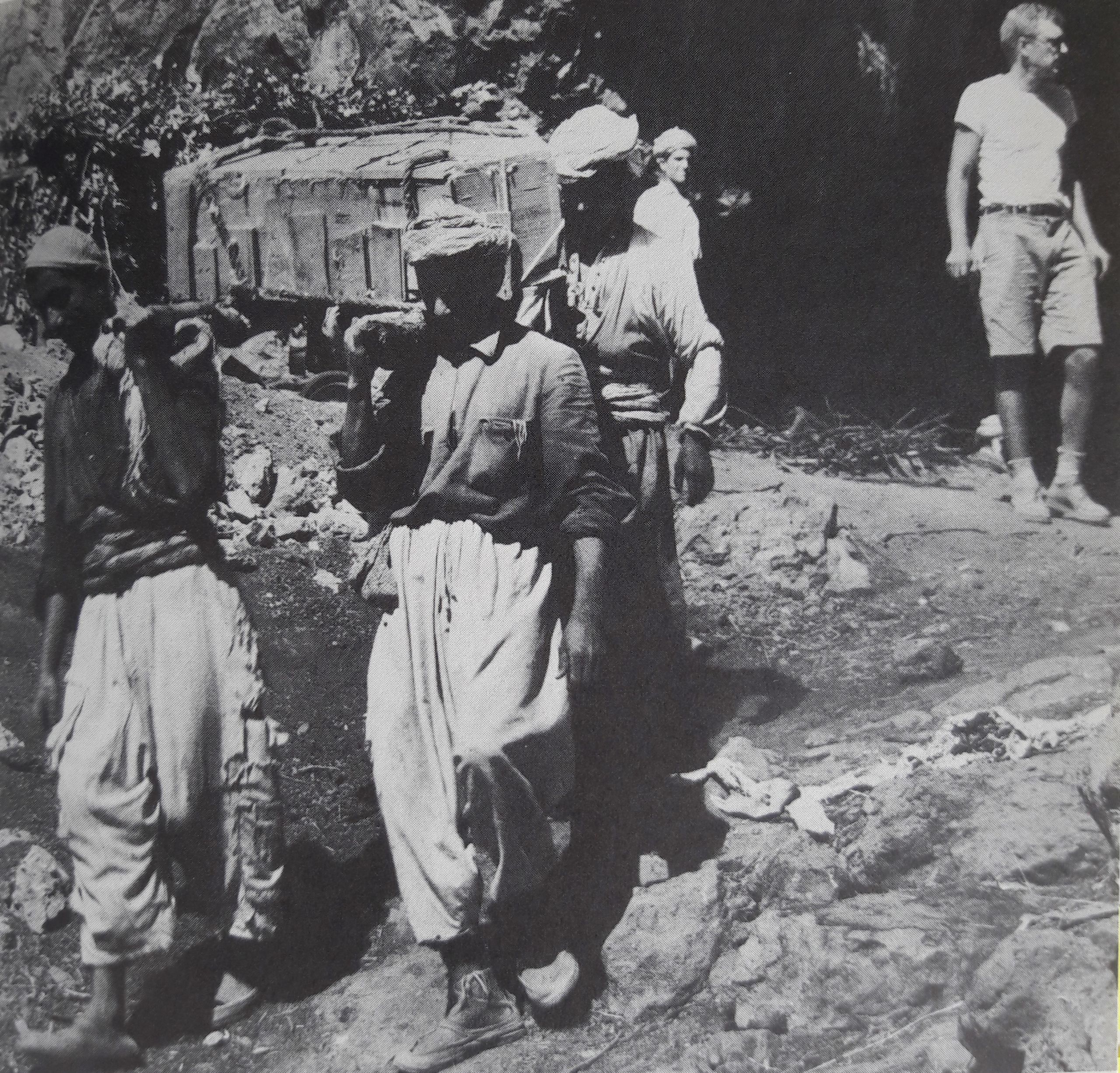
Ralph Solecki’s excavation team carrying the block containing Shanidar 4 (the flower burial), 6, 8 and 9 down from the cave to be transported to the Baghdad Museum for further study.
Ralph Solecki’s excavation team carrying the block containing Shanidar 4 (the flower burial), 6, 8 and 9 down from the cave to be transported to the Baghdad Museum for further study.
A 3D rendering of the in situ positions of the Neanderthal left hand and torso as it emerged from the sediment of Shanidar Cave. Credit: Ross Lane.
A 3D rendering of the in situ positions of the Neanderthal left hand and torso as it emerged from the sediment of Shanidar Cave. Credit: Ross Lane.
Scans have revealed the petrous bone to be intact. Named for the Latin petrosus, or ‘stone’, it’s a wedge at the base of your skull, behind the ear, and one of the densest bones in the body. The petrous is a grail for hunters of ancient DNA, as it can preserve genetic data for millennia.
We have ancient Neanderthal DNA from the North, where colder climates aided preservation. That’s how we know they bred with modern humans at some point. All non-African people still carry an average of 2% Neanderthal DNA, and a recent study from Princeton suggests most Africans also have around 0.3%.
What we don’t have is Neanderthal genetics from hot and dry South West Asia, where this interbreeding most likely occurred as modern humans spilled out of Africa. Shanidar Z might be the best hope yet.
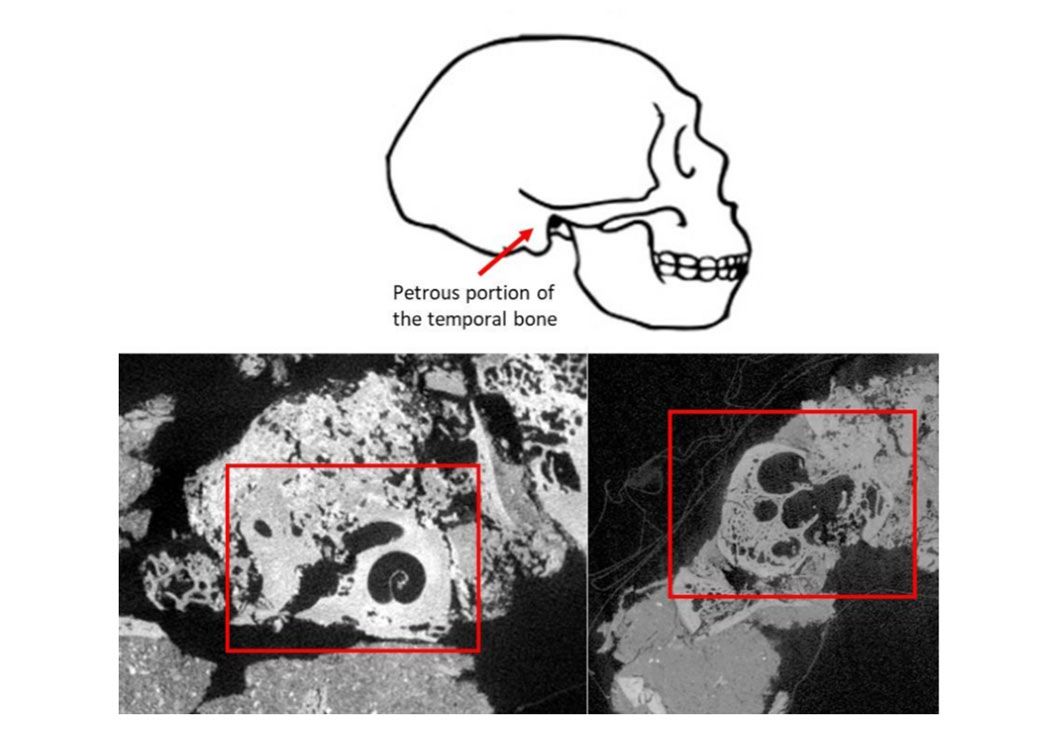
Cross-sectional CT image showing the petrous part of the temporal and inner ear (within red box) of the new Shanidar skull.
Cross-sectional CT image showing the petrous part of the temporal and inner ear (within red box) of the new Shanidar skull.
Some argue that competition from our species was the catalyst for Neanderthal extinction. Other theories include an inability to cope with changing climates. In the office above Pomeroy, PhD student Emily Tilby is sifting through shards of shell and bone from Shanidar snails and mice, searching for traces of temperature shift.
“Small animals are particularly sensitive to climate change,” explains Barker. “Greenland ice cores give us a general global picture, but these tiny bones can tell us about changing climates in Kurdistan at the time when Neanderthals were roaming its mountains.”
Estimates suggest that – despite ranging from the Atlantic coast to the Urals and South West Asia – there may have only been around 20,000 Neanderthals at any one time, says Barker, “living in widely dispersed small clans yet somehow staying connected across the landscape.”
Part of that connection may have been locations of cultural significance to which they returned again and again – places like Shanidar Cave. “We have Neanderthals at different levels, as well as this cluster of bodies next to a very large rock, perhaps some kind of marker,” says Pomeroy. “Not only are they returning to the same cave, but they appear to be putting bodies in the same spot.”
“While it’s common across human cultures to have places in the landscape earmarked for the dead, maybe we are seeing traces of this behaviour in a different species”
Time between deaths is a mystery. Solecki proposed that some of the Shanidar Neanderthals were killed simultaneously by rockfall. Pomeroy thinks this unlikely, but whether the bodies are separated by weeks, decades or centuries is a major challenge for the new research. “Getting scientific evidence for this is going to be one of the hardest nuts to crack,” says Barker.
Terms like ‘cemetery’ and ‘grave’ are problematic for the researchers. “We can’t yet be absolutely sure if Neanderthals were actually digging holes for the dead, then covering them over,” says Pomeroy, who prefers the phrase “mortuary behaviour”.
Early evidence from the new excavations suggests that some of the Neanderthals had been deposited in natural dips in the cave floor created by water, but also that “intentional digging” around the bodies had occurred.
If Neanderthals were living in the cave there may have been practicalities (“you don’t want decomposing bodies to attract hyenas”), but Barker cautions against modern mindsets – death as medical fact – when considering their behaviour.
“In many traditional human societies, death is a long process, with stages of interment and ceremony. And funerary rites can sometimes be more about making sure the dead are not coming back than helping them with their onward journey,” Barker says.
He points out that isolated groups spread across Europe and the Near East over many thousands of years won’t have left a single Neanderthal way of death. “Between a body being dumped and elaborate funerary activity involving items such as flowers, there’s a vast range of possibilities.”
The pioneering pollen work of paleobotanist Arlette Leroi-Gourhan in the 1960s, which led to Solecki’s ‘flower burial’ claim, has been criticised in the years since (although Pomeroy and colleague Lucy Farr have uncovered documents in the Smithsonian they believe may rebut the rebuttals).
Some argue it was animals dragging flowers into burrows that caused pollen clumps. Others say Solecki’s workers tramped in petals from their daily cave commute. With colleagues at Liverpool John Moores, the team are reopening the case of the flower burial by analysing resin-imbued sediment from the scene, sliced wafer-thin.
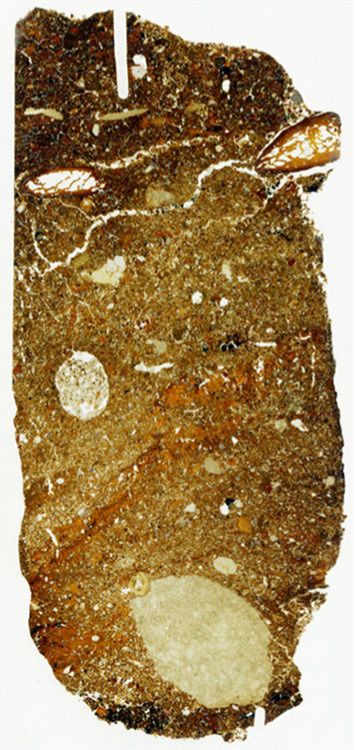
Micromorphology thin section through the cut feature containing the new hominin remains. Credit: Lucy Farr.
Micromorphology thin section through the cut feature containing the new hominin remains. Credit: Lucy Farr.
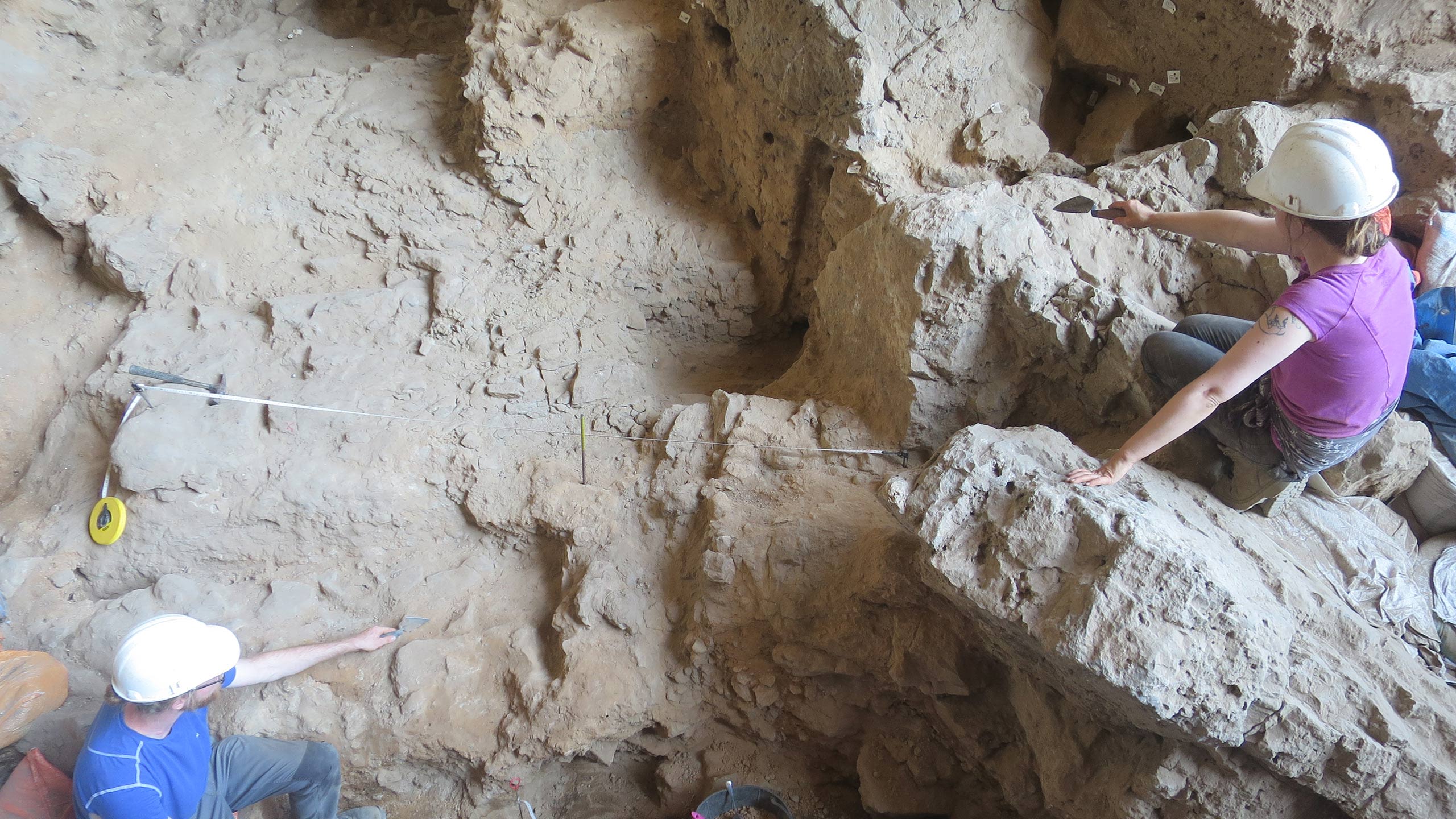
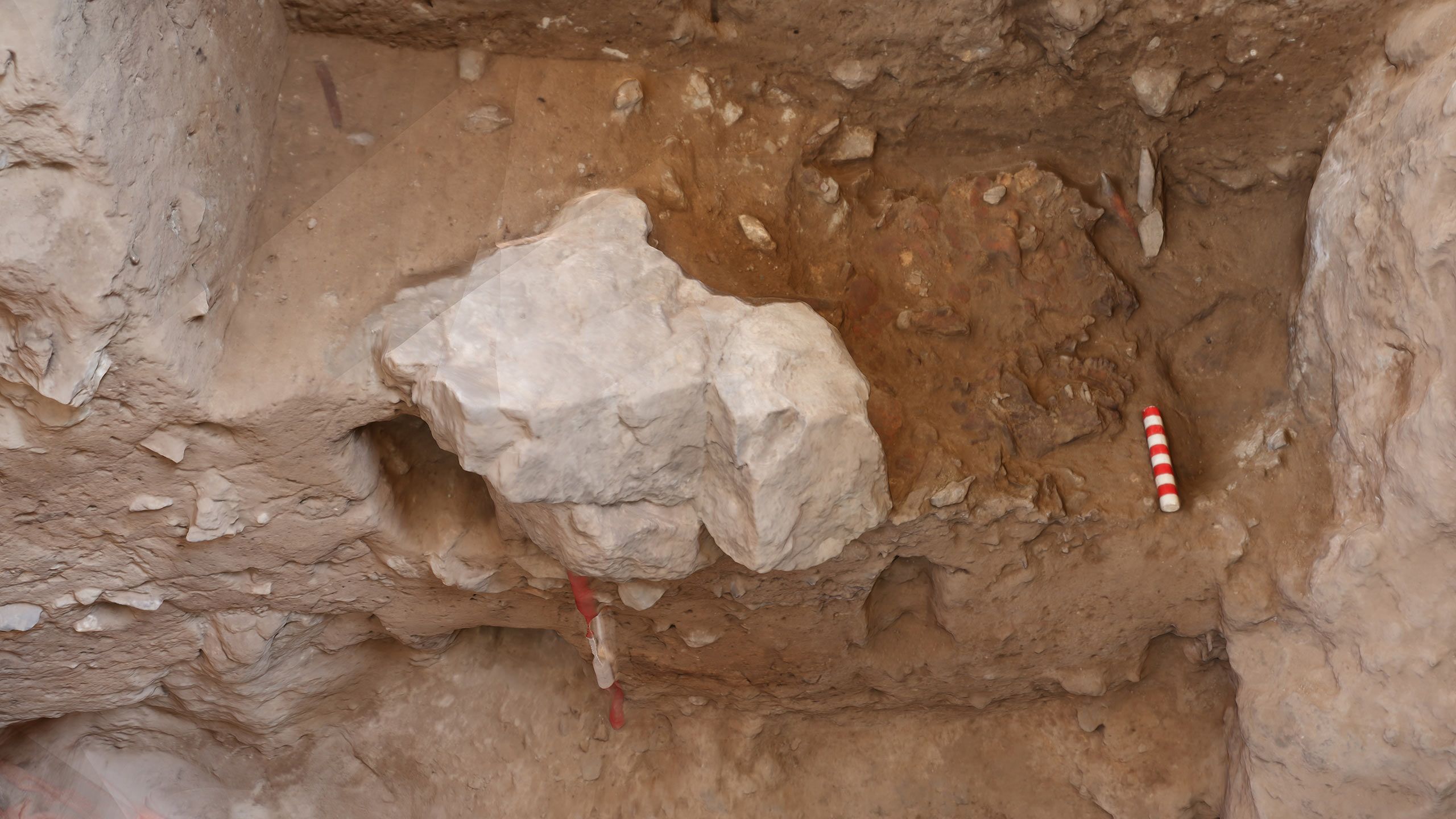
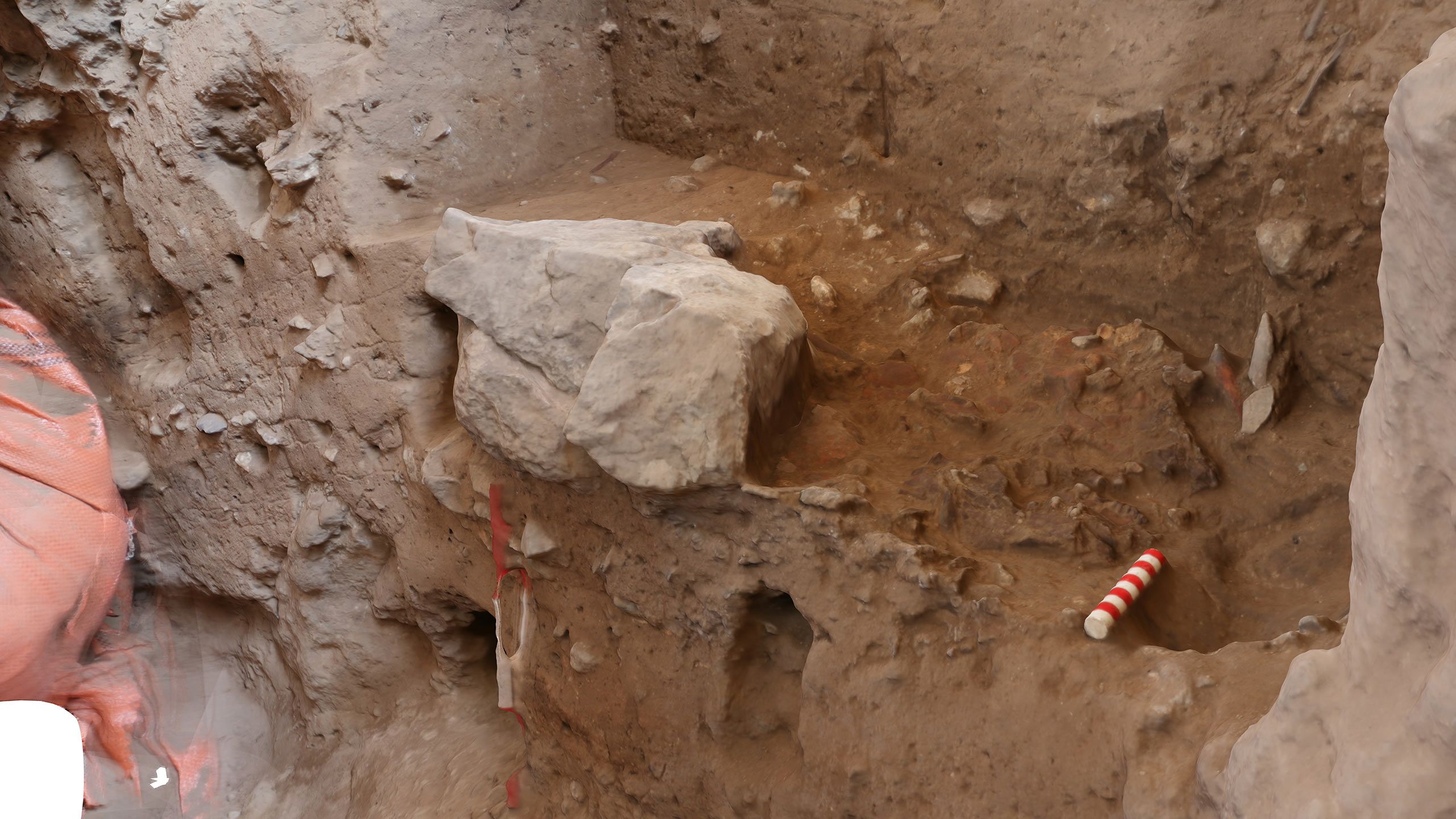
Shanidar Z came back from Iraq as hand luggage. When Pomeroy moved from Liverpool to Cambridge in 2018, she drove the Neanderthal down packed in a suitcase, in a car that also contained the remains of John of Wheathampsted, a 15th century abbot of St Albans (“I introduced them to eighties cheese on the radio”).
Analyses of bones and sediment from the excavations are now in full swing at Cambridge’s Department of Archaeology and Liverpool John Moores University. “An archaeological project like this involves an ever-growing circle to help with specialist analyses,” says Barker. “The current list includes colleagues at Belfast, Bordeaux, Copenhagen, Leiden, Liverpool, London, Orléans and Oxford Universities.”
“We also depend absolutely on the enthusiastic support of local Kurdish people and the Kurdistan archaeological authorities, for both of whom Shanidar Cave is core to Kurdish identity.”
In the intervening decades since Solecki described the flower burial, mounting evidence of Neanderthal culture and cognition suggests a species much closer to humankind than the “brutish cavemen” of common conception.
Just the last few years have seen use of decorative shells and even specific cave daubings attributed to Neanderthals. However, the repeated ritual interment of the dead within a site of memory, possibly over long periods of time, would suggest cultural complexity of a higher order.
“The questions are big, and go to the heart of what makes us human,” says Barker. “But determining the death practices of these Neanderthals will be far from easy. It’s as if we’ve got ten or eleven bits of a million-piece jigsaw, and we haven’t even got the picture on the top of the box.”
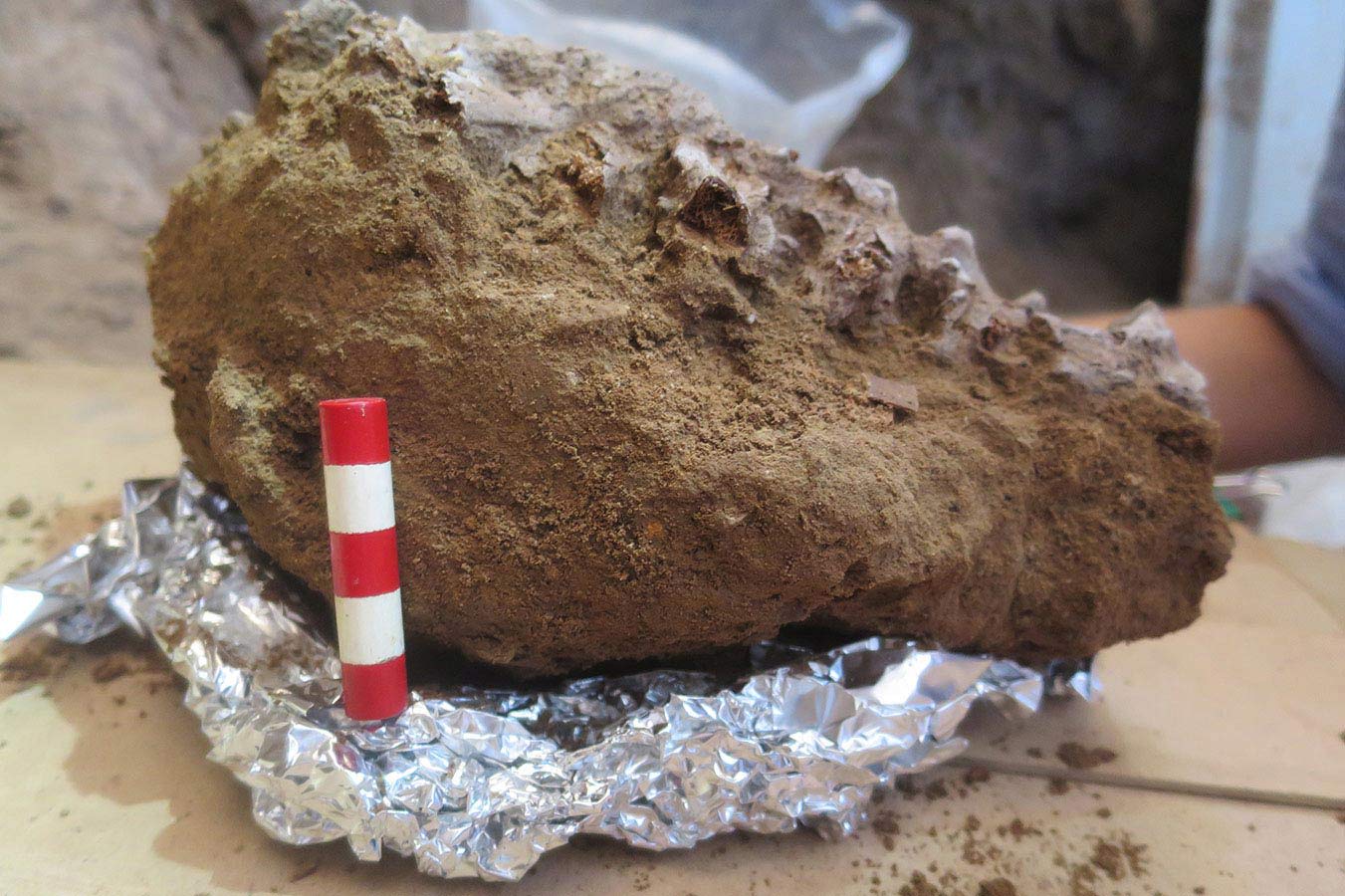
The spinal column of the Neanderthal immediately after removal, in a small block of the surrounding sediment.
The spinal column of the Neanderthal immediately after removal, in a small block of the surrounding sediment.
Inset image credit: View looking out from Shanidar Cave, taken in October 2016. Credit: Hardscarf from Wikimedia commons.
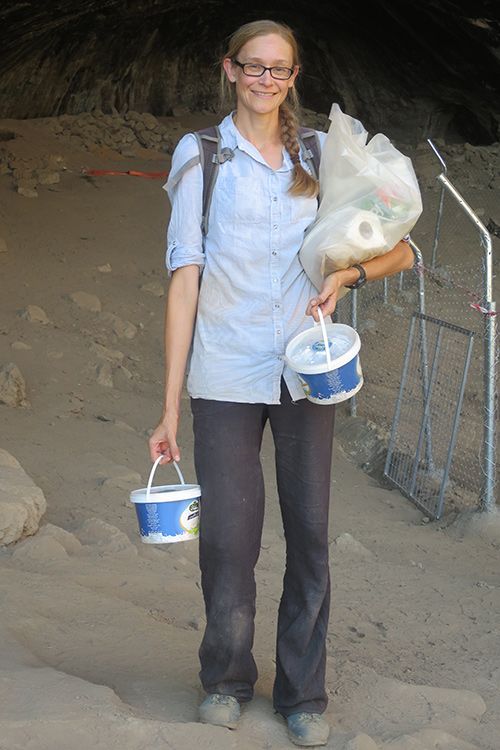
Dr Emma Pomeroy on site at Shanidar Cave.
Dr Emma Pomeroy on site at Shanidar Cave.
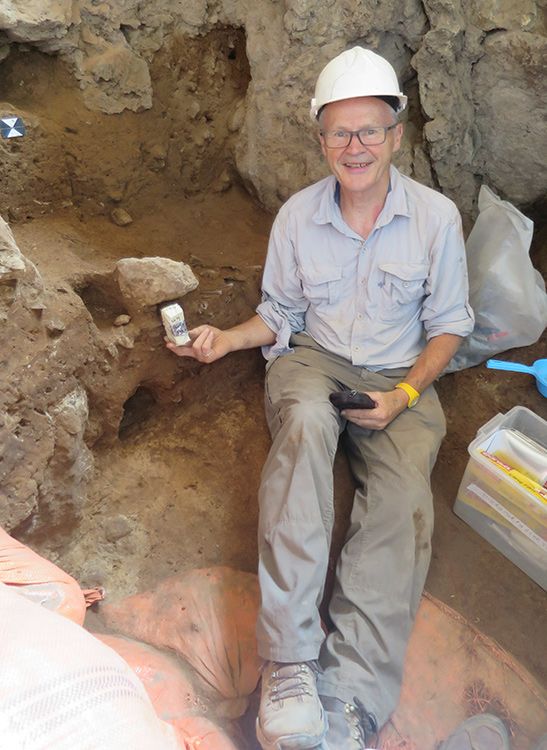
Professor Graeme Barker onsite inside Shanidar Cave, with the emerging Neanderthal behind him.
Professor Graeme Barker onsite inside Shanidar Cave, with the emerging Neanderthal behind him.
